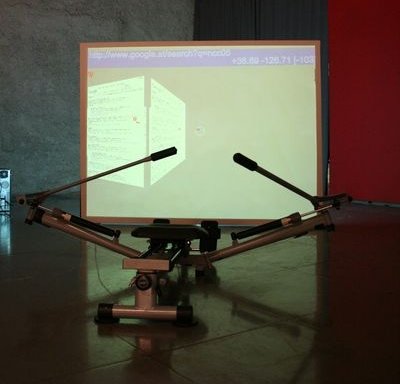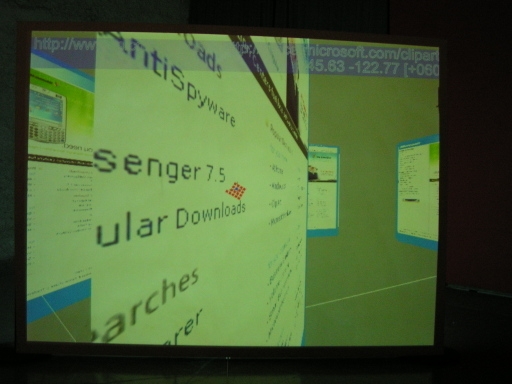Surf the net


"row the net" is a physical interface to the world-wide-web. The main topics of this installation (series) are interfaces and interaction between humans and machines, as well as navigation without bounds. A series of test arrangements examines the capabilities of (hobby) activities like “surfing the net”, “swimming the net” or “rowing the net” as connecting links between real and virtual environments. The selected settings take the intersection of living conditions with media reality into account. This arrangement can be seen as a mirror of a gym-like organisation of our spare time, that actively invades our life. An accumulation of leisure activities provides the very things that enables the perpetual availability of the net. This full time occupation guarantees a non in-depth examination of available information. Finally, this work focusses on an event driven "society of spectacle“ (Guy Debord), that catapults itself from one climax to the next. Esp. the rowing exercise machine and the indoor surfboard/station demonstrate this virtual reality that is experienced at an accelerated pace: I can no more stop and examine a piece of information, my inertia carries me on, whether this is my desire or not. We exploit several (at least three) spare-time activities to allow for a journey through the internet beyond the vehicles of keyboard and mouse. By utilizing image recognition sytems and kinetic analysis, a certain type of movement (swimming, surfing,...) is captured and employed to move from one page to the next, following a route of links. One has to actively take exercises to do to the next site. Like all patterns of movement, this needs to be trained. The user is confronted with a (euclidean) three-dimensional representation that connects worlds (webpages) in space via travelling routes. These connections correspond to hyperlinks. The webpages constitute the various planets of a new universe. New roles are assigned to the route between these information islands, that transforms the annoying standby time when waiting for a new website to show up into the main point of interest when “surfing the net”. The traditional two-dimensional, sequential view on the “internet” as a series of websites becomes an at-least three dimenstional world. This allows for a better mapping of a network structure with many parallel nodes, thus depicting the internet with a more relational conception of space than usual. The arrangement of the websites is made according to their real-world position: If the servers hosting two linked websites are far apart (e.g. they are situated in Linz and New York), one will have to row significantly more (e.g. cross the Atlantic) than if the sites would be hosted on the same machine: physical neighbourhood becomes an important decision factor, just like social and cultural affinity controls (often unwittingly) our browsing behaviour in normal keyboard/mouse-based web browsers. Experimentation with these uncommon interfaces will eventually give us new instructions for navigating the web.